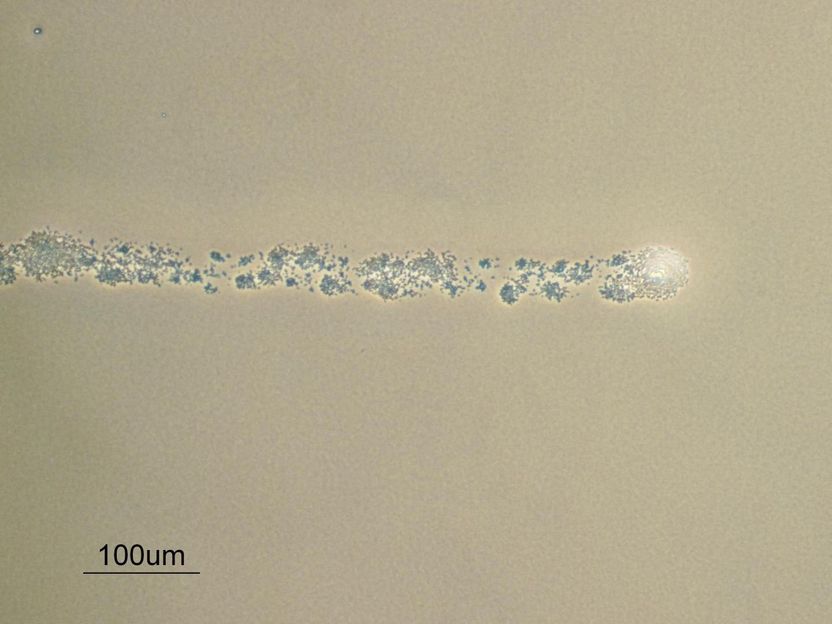Trophos and MS-Repair partners present promising data on novel approach in multiple sclerosis
Trophos SA announced that Trophos and partners in the MS-Repair consortium delivered an oral presentation detailing Trophos’ novel approach in multiple sclerosis (MS) at the recent Society for neuroscience (SfN) Meeting. The data presented demonstrate that olesoxime, Trophos’ lead compound, is a promising candidate for neuroaxonal repair and remyelination in white matter diseases, notably multiple sclerosis. The MS-Repair project is supported by the French Agence Nationale pour la Recherche (ANR).
Novel compounds to promote axon repair and remyelination in multiple sclerosis (Bordet et al.). It showed that Olesoxime dose-dependently promoted oligodendrocyte maturation and myelination in several in vitro (oligodendrocyte progenitor cells, oligodendrocyte – neuron co-cultures, organotypic brain slice cultures) and two in vivo models (cuprizone and lysophosphatidyl choline induced demyelination).
The results were obtained by a collaboration supported by the ANR project MS-Repair awarded to Trophos and two academic partners in Marseille, Dr Pascale Durbec at the Institut de Biologie du Développement de Marseille Luminy CNRS – Université de la Méditerranée UMR6216 and Dr Angèle Viola at the Centre de Résonance Magnétique Biologique et Médicale CNRS – Université de la Méditerranée UMR6612, in February 2009.
Olesoxime (TRO19622) is the lead compound of Trophos' proprietary cholesterol-oxime compound family of mitochondrial pore modulators, developed for their ability to promote the function and survival of neurons and other cell types under disease-relevant stress conditions through interactions with the mitochondrial permeability transition pore (mPTP). The data announced today show that olesoxime also has the ability to promote remyelination in addition to providing neuroprotection. Olesoxime is currently in two pivotal clinical efficacy studies, the first in over 500 patients with Amyotrophic Lateral Sclerosis with results expected in the fourth quarter of next year (see releases of May 9 2009 and March 17 2010) and the second a recently started pivotal clinical study in Spinal Muscular Atrophy (see release of October 15 2010).
Most read news
Other news from the department research and development

Get the life science industry in your inbox
By submitting this form you agree that LUMITOS AG will send you the newsletter(s) selected above by email. Your data will not be passed on to third parties. Your data will be stored and processed in accordance with our data protection regulations. LUMITOS may contact you by email for the purpose of advertising or market and opinion surveys. You can revoke your consent at any time without giving reasons to LUMITOS AG, Ernst-Augustin-Str. 2, 12489 Berlin, Germany or by e-mail at revoke@lumitos.com with effect for the future. In addition, each email contains a link to unsubscribe from the corresponding newsletter.
Most read news
More news from our other portals
Last viewed contents
Michael_Tierra
Research on Dendrites Wins 2011 Eppendorf & Science Prize
Horizon Discovery and Bayer Collaborate to Develop Cell Line Models to Support Oncology Programs
Chemists use DNA to build the world's tiniest thermometer
Corneille_Heymans





















































